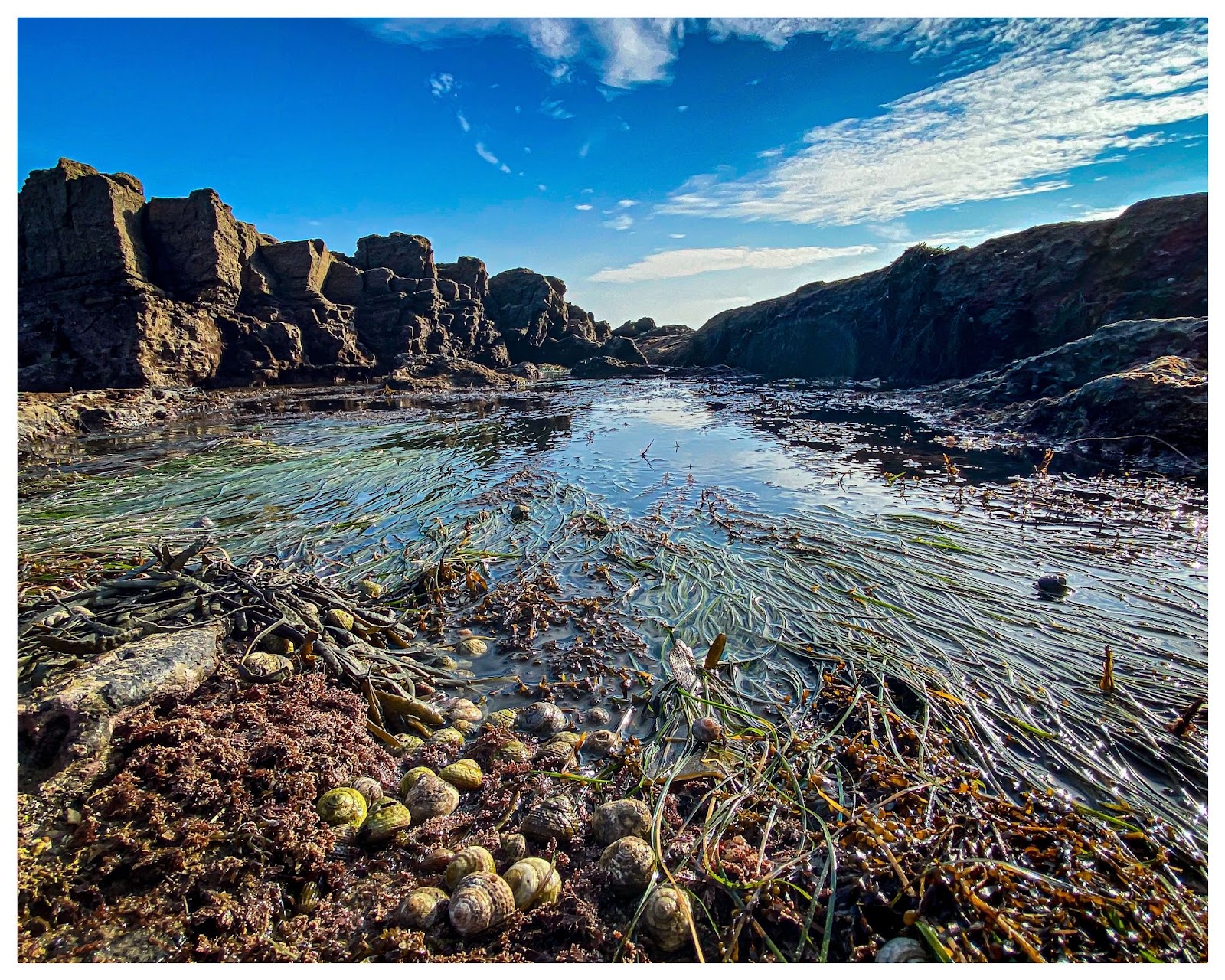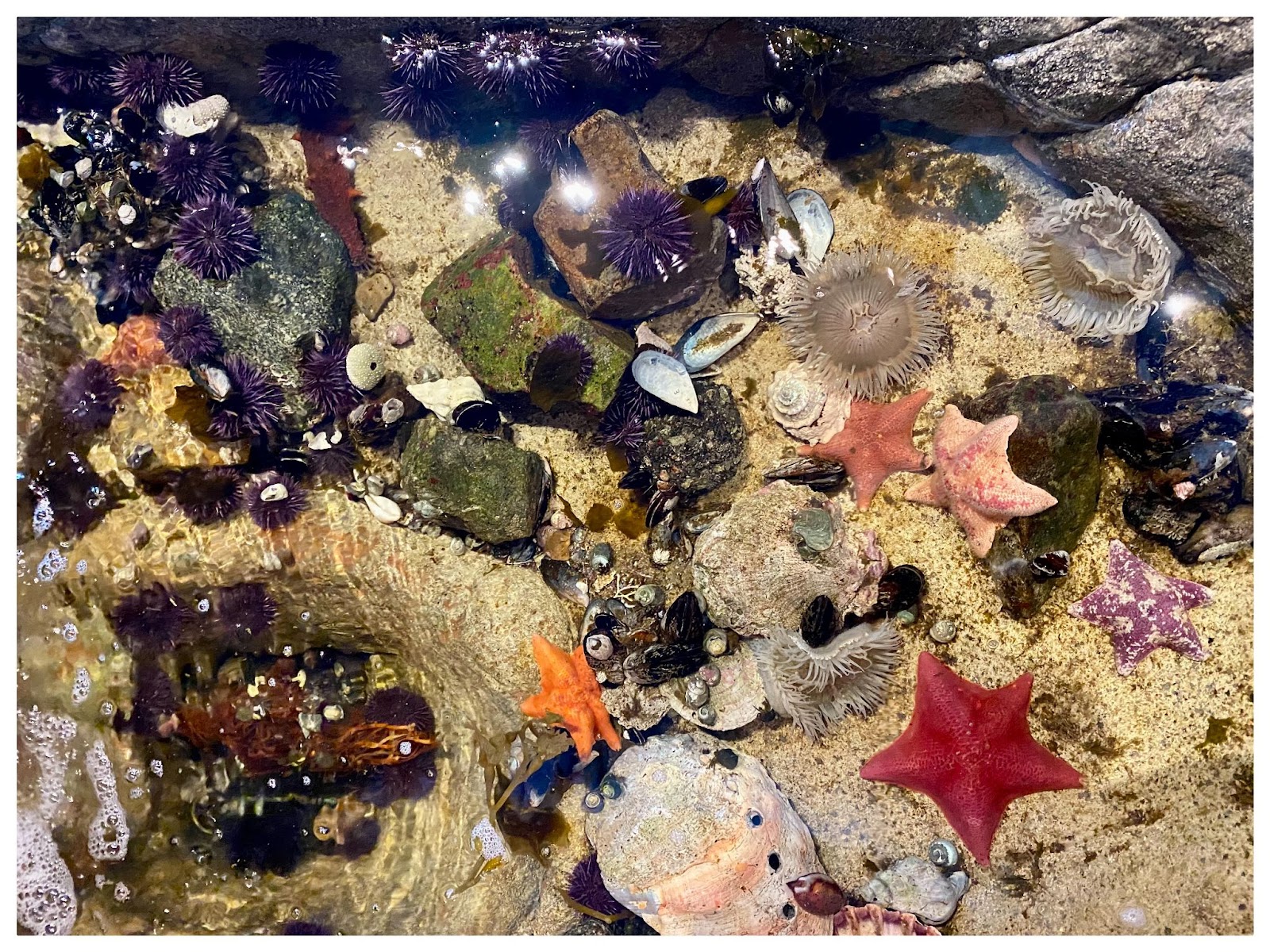Trekking the Tide Pools:
What You Need to Know Before You Go
Have you recently visited the aquarium, and want to continue learning about the amazing local marine ecosystems? Are you looking to explore your local tide pools to see how many species you can spot? This guide is the perfect tool to prepare yourself to have a safe and educational visit to the rocky intertidal ecosystem of Southern California.
Introduction to Tide Pools and the Rocky Intertidal Ecosystem
The rocky intertidal is deemed one of the most biologically productive ecosystems on the planet due to the immense diversity of animals, plants, and algaes that can be found along the wave-swept rocky shore. The changing tide levels require the organisms living within the habitat to be well-adapted to the drastic temperature changes and harsh conditions at the wave breaking point. This has led to an immensely biodiverse community of species who use a variety of tools and adaptations to thrive in these rigorous conditions. In fact, each tide pool can be seen as its own microhabitat, having dozens of species coexisting within a single tide pool. Let’s not add to these stressors by being unwelcome guests in this ecosystem. Instead, use this guide to ensure you are following safe practices when exploring the intertidal.
Things to Know Before You Go
- There are 2 high and 2 low tides each day, which are controlled by the gravitational forces of the moon.
- The changing tides create tide pools that many resident organisms rely on to evade predators, desiccation (drying out), and other external stressors during low tides.
- The best time to visit the tide pools is at low tide, as many of the smaller tide pools will be exposed and more easily visible. To check your local tide schedule, click here.
- The algaes that grow on the rocks in the intertidal create very slippery surfaces, so look for footholds on dry uncovered rocks to ensure a secure footing.
Do’s and Don’ts of Visiting the Tide Pools
Do…
…Watch your step to avoid stepping on any living organisms
…Wear close-toed shoes with good grip
…Wear waterproof/water resistant clothing
…Use sun protection (ie. a hat, long sleeves, ocean safe sunscreen, etc.)
…Safely pick up any trash that you see left in the ecosystem
…Explore all portions of the ecosystem
Don’t…
…Flip over or move rocks
…Walk on areas covered in living organisms including algaes, anemones, limpets, etc.
…Take anything home with you that you did not bring (ie. rocks, shells, etc.)
…Leave anything that you brought with you behind in the ecosystem
…Pick up, move, or disturb the local organisms
…Turn your back on the ocean, the tides can rise quickly and easily knock you over
…Bring your pets to the tide pools
Threats to the Rocky Intertidal and tide pools
- Human Trampling: Trampling occurs when human visitors crush flora and fauna that are not adapted to withstand the force of human footsteps.
- Pollution: Intertidal ecosystems are in a constant battle with human-caused pollution from guests visiting the ecosystem and leaving trash behind, trash washing ashore during a high tide, or trash being brought to the habitat through outfall pipes after a rainstorm, creating drastic changes in water quality that species are not equipped to handle.
- Ocean acidification: Ocean acidification is the rising of the ocean’s acidity and is caused by the increasing amount of carbon dioxide entering the ocean, making it increasingly difficult for the intertidal species that use calcium to grow their shells and exoskeletons.
How Can You Help This Ecosystem?
There are behavior changes that we can implement into our daily lives to help lower our impact on intertidal species and the ecosystem as a whole.
- To help eliminate trampling, be sure to watch each and every step to ensure you are not stepping on, dislodging, or disturbing any delicate species residing on the rocky substrates of the ecosystem.
- There are many easy ways to lower the amount of trash entering the tide pools, helping to combat the amount of pollution in the ecosystem. This includes switching to reusable products instead of single-use plastic items like bottles, utensils, straws, storage containers, and so much more. You can also participate in community trash cleanups in your own neighborhood or your closest beach, reducing the amount of trash entering the storm drains and making their way to the tide pools through outfall pipes.
- Combatting ocean acidification is achievable by reducing your use of fossil fuels by carpooling, walking, or biking to work or school. On a smaller scale, you can work on lowering your energy consumption by turning off lights when not in a room, as well as ensuring other electronics like TVs and video games are fully turned off when not in use.


